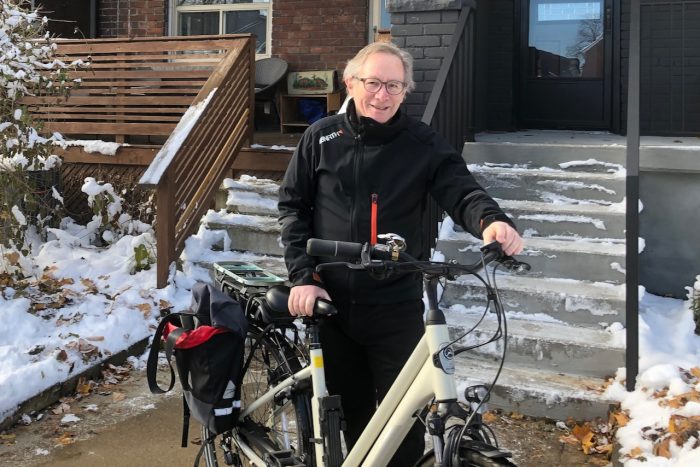
I am honored to have been invited to contribute a regular column on the topic of carbon to Green Building Advisor, although I do so with some trepidation. This crowd knows its stuff; and I feel a little out of practice. I was an architect for decades, then a real estate developer, and a prefabricated housing promoter. I even tried my hand at building tiny homes before realizing I was better suited to writing and teaching sustainable design at Toronto Metropolitan University. In 2021, I authored the book Living the 1.5 Degree Lifestyle: Why Individual Climate Action Matters More Than Ever, which describes my attempt to reduce my “lifestyle” carbon emissions—those I have some control over—to less than 2.5 metric tons per year. I did all the usual carbon footprint things: I gave up red meat, rode my bike instead of driving, and bought less stuff.
Assessing emission sources
But at the end of the year, it became clear that it mattered less what I did than where I lived. I could give up driving because I lived in a 110-year-old “streetcar suburb” where everything I needed was close by, and I never actually needed to drive. My electricity is almost carbon-free, coming from hydro and nuclear. I had subdivided my 100-year-old house into two units eight years ago, so my wife and I occupied just 1200 sq. ft. My carbon footprint was smallish because of the design of the built environment: how much space I occupied, how I got around, and how it was all powered.
I didn’t buy much stuff, but the stuff I owned was problematic because of the carbon emissions from making it. Take my iPhone 11 Pro. The phone is small and light, at 6.63 oz. or 188 g., and sips electricity. Apple publishes carbon lifecycle assessments of its products, which show the 11 Pro having lifecycle carbon emissions of 80 kg. or 425 times the phone’s weight. Apple says that 86% of the emissions come from production and transport and 13% from use.
But Apple bases the carbon emissions from use on a North American mix of electric power, much of which is generated with fossil fuels. My power comes from hydro and nuclear, so my carbon emissions from using the phone are close to zero. That means that for my phone, nearly 100% of its carbon emissions come from the production and transport of the phone components.
The same rule applies to your car or your home; when powered by fossil fuels, the operating emissions dominate. But as our homes get more efficient and we electrify everything, the emissions from manufacturing your new F-150 Lightning or “net-zero” home come to dominate the lifecycle picture.
Rethinking the terminology
We used to call the energy it took to make something “embodied energy,” so when we started talking carbon, it seemed natural to call it “embodied carbon.” But it’s a confusing term. The definition of embodied is “included or contained as a constituent part.” Carbon emissions are neither contained nor a constituent part; they have been released into the atmosphere.
If the carbon were embodied in my iPhone, it would weigh 176 pounds; I may lift weights occasionally, but I would have trouble with that. If embodied in the F-150 lightning, it would cause bridge collapses. No wonder people don’t understand it. This is why architects Elrond Burrell, Jorge Chapa, and I, sitting around the Twitter water cooler in 2019, came up with the term “upfront carbon,” which is carbon emitted upfront before anyone sets foot in the building.
Four years later, I am not certain that “upfront carbon” vs. “operating carbon” tells the whole story. According to the Intergovernmental Panel on Climate Change (IPCC), we have a carbon budget, meaning a maximum number of gigatons of emissions that we can add to the atmosphere before we hit 1.5° or 2°C of warming. Every kg. of carbon we emit goes against that budget. It matters now. These days, I am apt to say we have “now” emissions and “later” emissions.
Upfront carbon is released in varying amounts from every building material and product, even wood. That’s why how much we build is almost as important as what we build it out of. Martin Holladay noted this in the preface of his book, “Musings of an Energy Nerd”: “What the planet really needs is for all of us to buy less stuff, including so-called green building materials, and to strive, every year, to burn less fossil fuels than the year before.” These are words to live by and are key to reducing both operating and upfront carbon emissions. Martin Holladay talks of modesty; the French call it sobriety; the IPCC boringly calls it “demand-side mitigation,” I call it sufficiency. But we all are saying the same thing: we need less but better.
Many are now saying we have blown 1.5° and maybe even 2°C of warming and that we can’t do anything about it. Others say we need to suck carbon dioxide out of the air, and we need hydrogen, fusion, and technological breakthroughs to solve this.
I don’t believe them.
We know what to do
We know how to build houses with zero operating emissions right now. We know how to put them in communities where we don’t have to drive pickup trucks for miles to get a quart of milk. We know how to pull heat out of the air and cook with magnetism; we don’t have to burn things anymore. We know how to choose materials with lower upfront carbon emissions, but we also know that the best way to reduce them is to use less stuff.
Buckminster Fuller once wrote, “How much does your building weigh? A question often used to challenge architects to consider how efficiently materials were used for the space enclosed.” To bring Bucky up to date, we must ask ourselves, “How much do our upfront carbon emissions weigh?” Because when you look at the world through the lens of upfront carbon, it changes everything. This is what I plan to report on going forward.
________________________________________________________________________
Lloyd Alter is a former architect and developer. His journalism career includes 15-plus years as design editor at Treehugger.com. Today he teaches sustainable design at Toronto Metropolitan University. His work can be found at Carbon Upfront.
Weekly Newsletter
Get building science and energy efficiency advice, plus special offers, in your inbox.






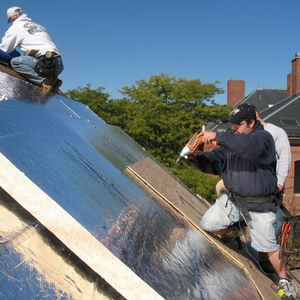



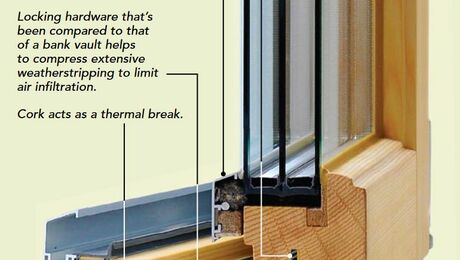

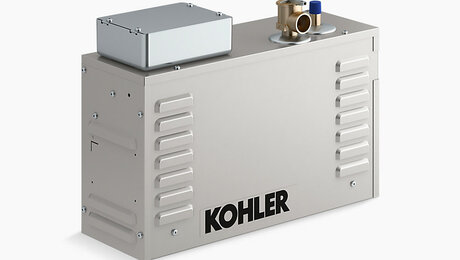
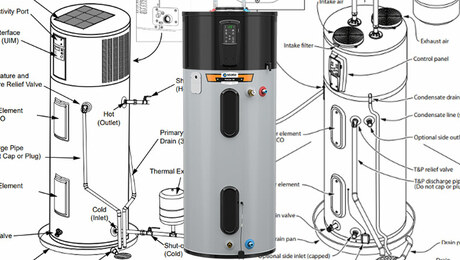

12 Comments
Welcome, Lloyd
Look forward to your efforts on GBA. The green lifestyle is elusive and will require more effort by more people if we are to make progress. More efficient buildings are a start, the building envelope must come first. All of the expensive HVAC gadgetry will not cover up a poorly designed and built structure.
Thank you,
Doug
Lloyd,
I've enjoyed your articles on treehugger and look forward to your contributions here on GBA. Are you still writing for Treehugger too?
Scott
I am no longer writing for Treehugger, but I can be found right here from now on.
Welcome, Lloyd. I look forward to reading your new column!
Thank you Michael, I am now hanging out with a tough crowd but I think it will be fun.
What great news. Something to look forward to!
Sounds like an interesting column.
I hope it might tackle some hard questions, like how do we make the move to efficient structures and systems when making those moves involves upfront carbon expenditures. Even renewables have this fundamental issue: they cost a lot of carbon now to build, but in theory lead to a cleaner future.
Decisions are easy when two equally performing options have different upfront carbon (e.g. wood fiber insulation vs xps) but things are far less clear when the question becomes "should we do this at all" (e.g. add the extra R-30, or buy the fanciest most efficient HVAC system imported from across the seas).
Welcome Lloyd!
Your chosen beat is perfect.
I know you'll enjoy working with Kiley and the super-smart and respectful community that makes GBA so cool.
Looking forward to your posts.
Welcome aboard Lloyd! I've loved your work at TreeHugger and It'll be great to have you here with the GBA team.
Without a doubt my biggest gripe with GBA is that site selection is almost always glossed over when it it is perhaps the most critical detail to holistic sustainability of a home. I'm looking forward to seeing your work and (fingers crossed) its impact on other contributors and editorial staff here.
Thanks for the note. I will be spending a few pixels on that!
Welcome Lloyd! As much as I value the technical information found on this website, there isn’t enough focus on what’s getting built and where it’s getting built even though it is what matters the most when it comes to environmental impact (and affordability for those who care). Sadly the least sustainable model; the single-family home that’s highly car dependent remains the norm in most green building articles.
It will be great to have a writer who can do the math and not just, say, try to sell us on the virtues of a "Leed Platinum" 7,500 sqft foot single family home with a 3-car garage and corresponding number of cars!
https://www.usgbc.org/projects/gpd-346-highland?view=overview
Your writings make me slightly uncomfortable and knock me off the high horse I climbed onto because of the latest energy efficiency project I have taken on.... Exactly what we all need!! Thanks for the constant reminder that we need to consume less, and that we can enjoy life just as much while consuming less!
Where my organization works in Africa, entire villages get by with a few solar panels, local building materials and enormous elbow grease. When I consider the amount of upfront and operating carbon produced per capita by most of the world's population compared to my own, it is stunning. It is clearly not fair to these folks or to our grandchildren that we use up so much of the world's resources and leave so much carbon in the atmosphere, especially when they are left with the greatest burden from such behavior.
Looking forward to your continuing to challenge us !
Log in or create an account to post a comment.
Sign up Log in